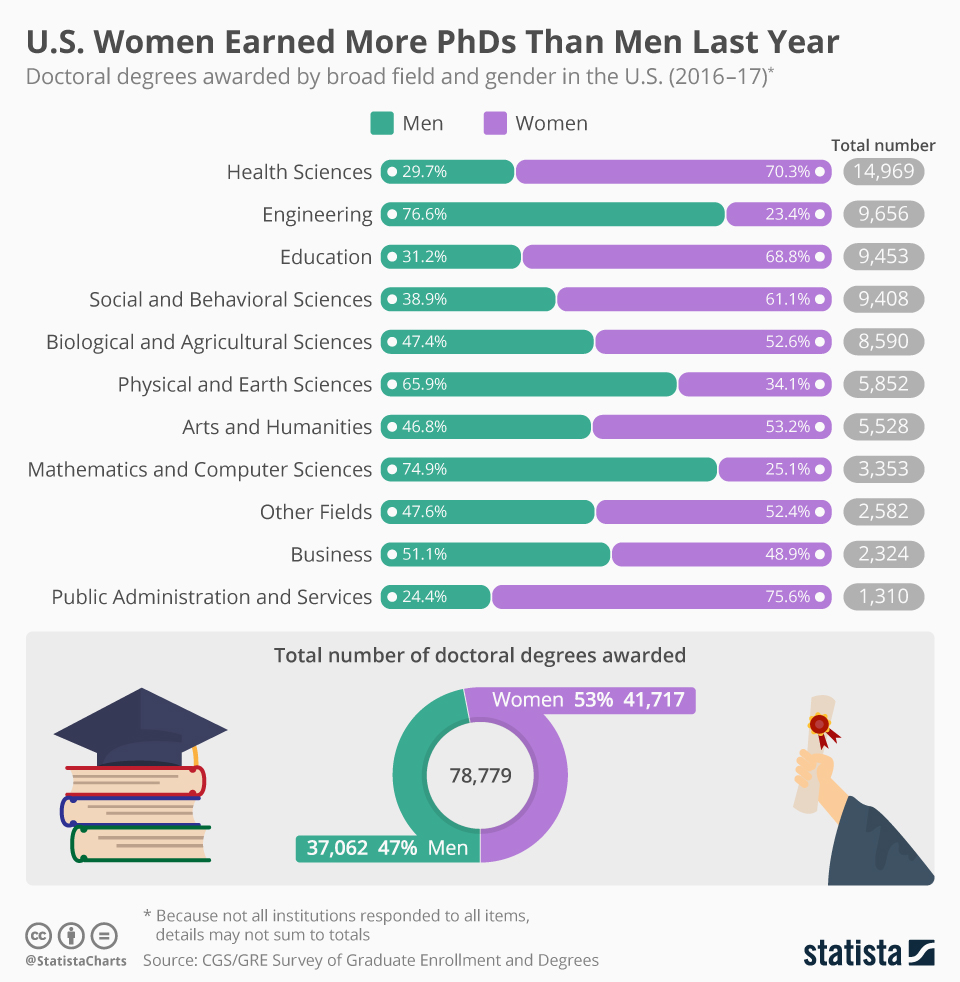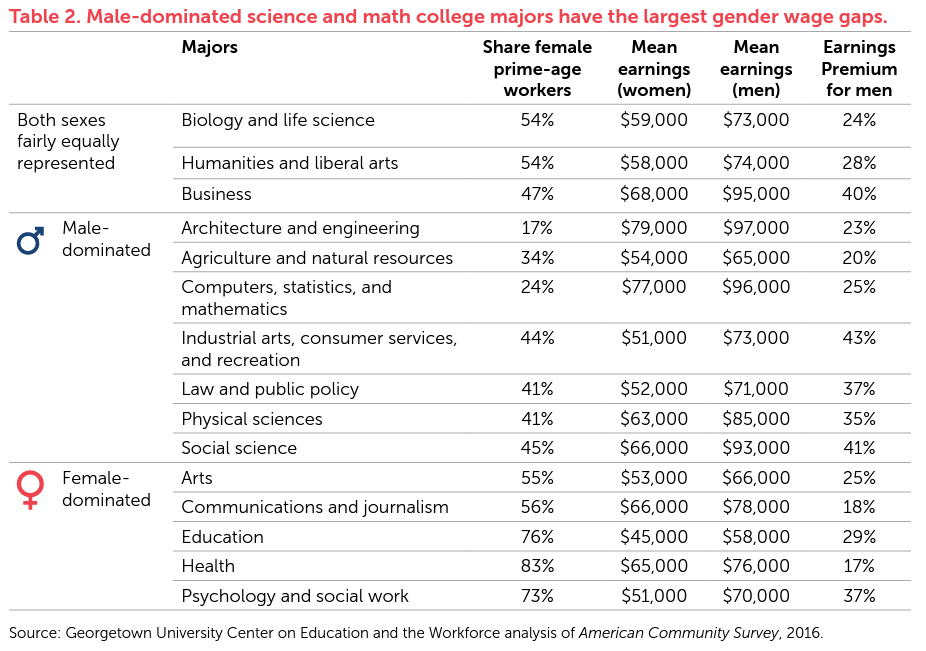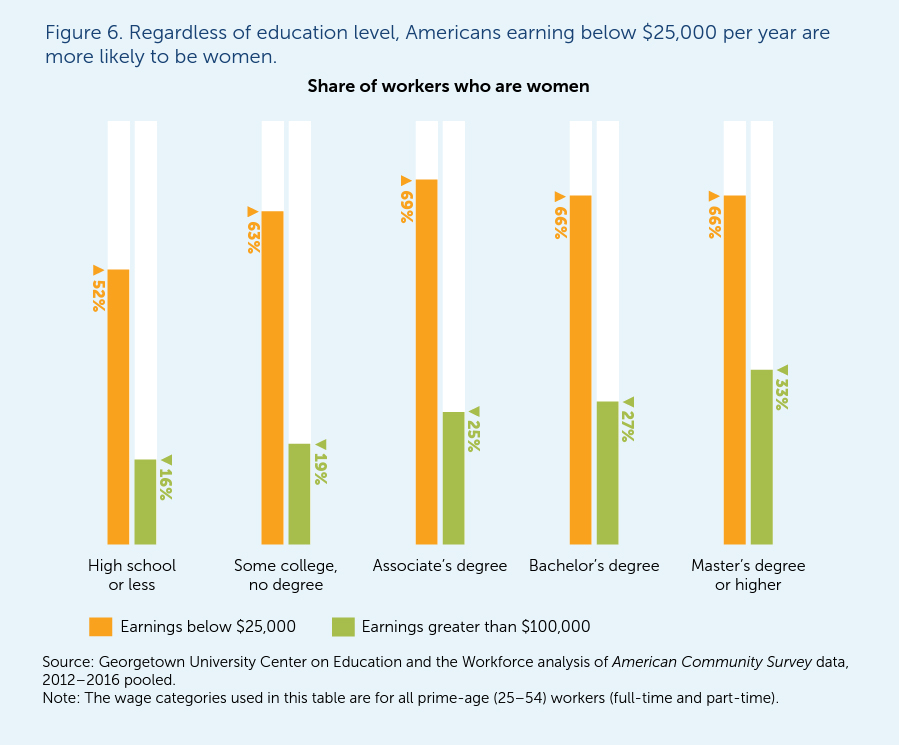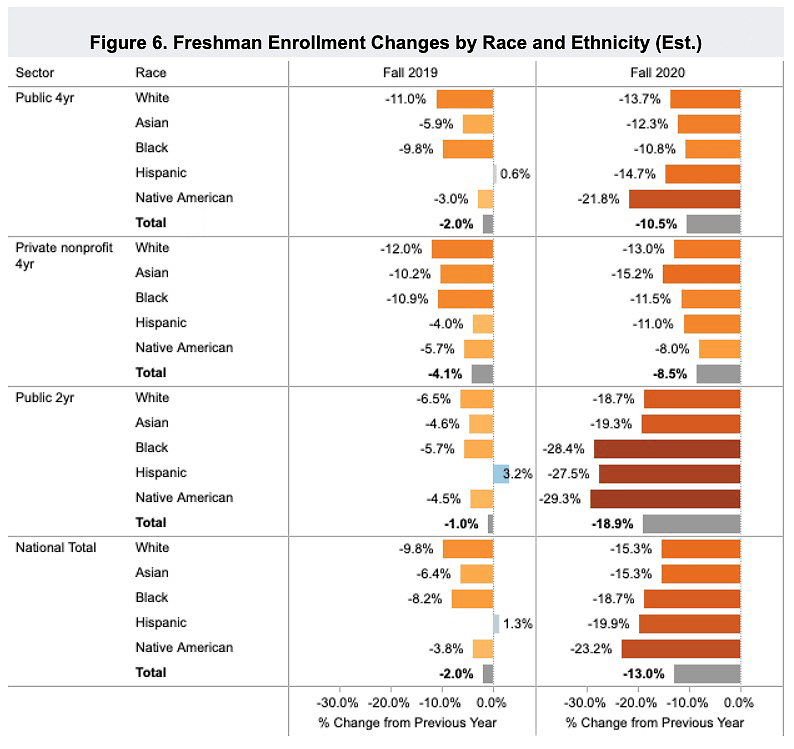Education is a concept that has been considered the great equalizer because the access and skills that it provides promotes improved career opportunities and can catapult an individual into the professional middle class. However, access to the great equalizer is not always equal, with rising costs of higher education and barriers for a variety of family and cultural backgrounds. Additionally, the benefits of higher education can vary depending on things such as race, gender, and location. For some it may be an easy ticket, but for others it is merely a first step.
“Women Can’t Win”: higher education leads to higher wage gaps for women
In recent decades, women have been attaining higher levels of education and earning more degrees than their male counterparts. The days of university lecture halls filled with only men are long over. However, despite this representation in the classroom, the wage gap between women and men continues to exist; an issue even more prevalent when examined along the lines of race as well as gender.
In the past 10 years, there has been a shift in gender representation within higher education institutions. Women are excelling in higher education, over a span of six years, women have a 63% graduation rate from undergraduate institutions while men have a 57% graduation rate. Women are achieving high levels of education, within doctoral programs women receive 53% of all doctoral degrees. This does not hold for all fields, for example women only receive 25% of tech degrees. Which is considered one of the most relevant and high paying careers in today’s job market.

Although the percentage of women earning degrees is higher than men, this does not translate to their compensation. Statistically, a woman’s salary compensation for a given position will be the equivalent of one step below a man’s, even for working the exact same role. Although increased access to education has played a role in closing the gender gap from $0.57 to $0.81 to the man’s dollar from 1975-2020, in recent years this closing movement has appeared to stagnate.

With women earning the majority of higher education degrees, a new gap disparity is becoming apparent. In order to have the same salary as a man in the same job, a woman has to earn one more degree. For example, a woman with a master’s degree is the salary equivalent to a man with a bachelor’s degree, a woman with a doctorate is equivalent to a man with a masters. This disparity is also seen in women who hold no degrees, specifically examining the earnings among men and women who earned less than high school diplomas.
A report by the Georgetown Center on Education and the Workforce highlights some of the reasons behind the wage gap despite the strides women in education have made. At the heart of these disparities are discrimination, but the study cites the main contributing factor as choice of professional field or field of study.

This again could be explained through discrimination because it will be more difficult for women to break into a male dominated field. For example, perhaps women only receive 25% of doctorate degrees in tech because it has historically been male dominated.
Community colleges during COVID-19
Community college education offers a great opportunity to receive a quality education at a more accessible price. However, like many industries, COVID19 drastically effected the field of higher education, dramatically effected community colleges.

The overall enrollment in higher education for the fall 2020 semester decreased by 2.5%. Community colleges in America experienced the largest drop, with a decrease of 10.1%. There are social explanations for this drop, students at community colleges may be more likely to have dependents or be working other jobs. The pandemic may have forced students to unenroll in order to care for family members, or work jobs to support their families financially.
The demographic with the largest drop in enrollment was Native Americans who experienced a decrease in community college enrollment of 22%. Despite this significant drop in enrollment, one tribal college was able to combat this disparity and ended up increasing enrollment by 150% by expanding outreach programs and the availability of online courses and decreasing the tuition for the year.
Affirmative action: the champion of education equity
Affirmative action is used to increase the representation of marginalized groups within education and employment. Serving as a barrier and protecting from systemic structures which promote unequal access to opportunity. However, there have been three Supreme Court cases with the potential to overturn affirmative action.
In the 2003 Supreme Court case of Grutter v. Bollinger, the court stated that student body diversity was a compelling state interest and upheld affirmative action. In the 2016 case of Fisher v. University of Texas at Austin, the court again sided with the university, stating their admission process did not violate the Equal Protection Clause. The courts sided with Harvard in a 2020 case, stating the school does not discriminate against Asian-Americans and emphasizing the importance of race-conscious admissions in order to diversify the student body. However, more recent lawsuits against both Harvard and the University of North Carolina by Students for Fair Admissions, a group that opposes racial consideration in admissions, will be heard by the Supreme Court in the next session. Many experts believe the conservative-leaning Court may ban the use of affirmative action in public and private colleges and universities.
These cases solidified the existing policies that emphasized the importance of diversity for state interests. Diversity is important in the education setting as it enhances the critical thinking and intercultural communication skills of both students and faculty. This environment promotes creativity and innovation and is also a practice of democratic ideals endorsing education equity.
CMAC research assistant Sarah Berkowitz has researched wage inequities across gender lines and in relation to education in the U.S. These are Sarah’s insights and recommendations for future policy opportunities. This blog was edited and expanded by CMAC communications assistant Lila Norris.

Sarah Berkowitz
Sarah is an undergraduate student majoring in International Studies at American University with a minor in Arabic. She is passionate about global health, environmental sustainability, and social justice issues. In her free time she likes to read, travel, and volunteer with community organizations.



